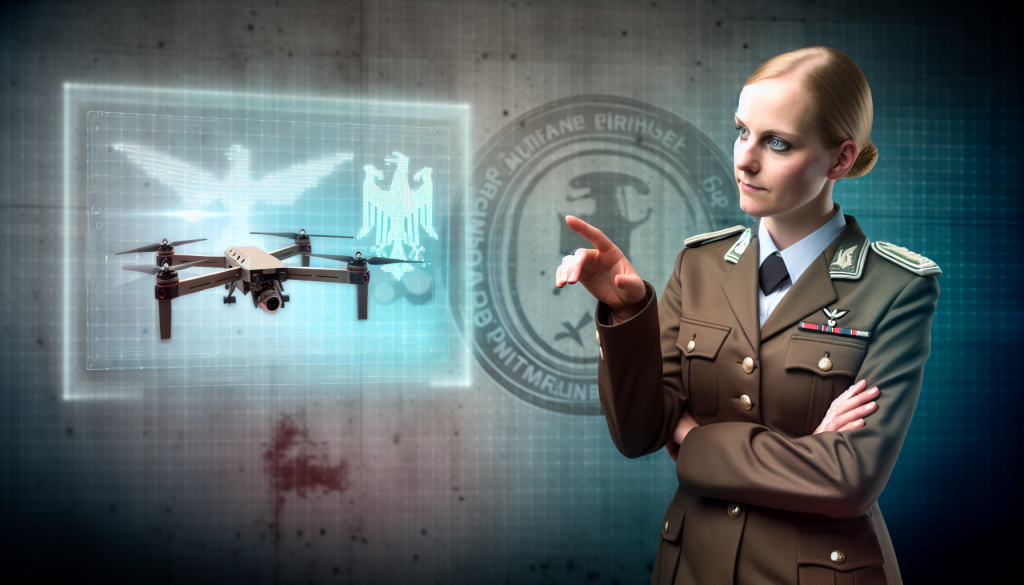Germany’s Urgent Response to the Drone Threat
In an ever-evolving security landscape, Germany’s top military official is calling for a swift response to the increasing threat posed by drones. General Carsten Breuer, the inspector general of the Bundeswehr, emphasizes the need for new weapons systems to effectively counter the drone warfare tactics that have gained prominence, particularly in conflicts like the ongoing war in Ukraine.
The Dire Need for New Weapons Systems
General Breuer has made it clear that the adoption of advanced weaponry is urgent. “One thing is clear to me: in the end, it will probably come down to us having to use drones against drones,” he stated, highlighting the necessity of developing integrated solutions for drone defense. With the significant volume of drones deployed by Russia in Ukraine, he insists that an effective defense strategy must include a diverse array of capabilities.
Breuer anticipates that progress will be made within months concerning the introduction of loitering munitions, which are often referred to as kamikaze drones. These innovative drones are designed to linger in the air until they identify a target, using advanced guidance systems, including artificial intelligence, to strike with precision. He revealed that decisions regarding the deployment of these munitions were made back in March, and the Bundeswehr is set to conduct live-fire tests by the end of the year.
The Drone Warfare Counteroffensive
The general pointed out that the race to deploy effective drone defense systems, including loitering munitions, is being treated with high urgency. However, he cautioned against fixating solely on drones. “We must not now say we are only focusing on drones,” Breuer remarked, underscoring that the threats from cruise missiles, rockets, and traditional aircraft remain very real.
Recent events have illustrated this urgency. Increased violations of NATO airspace by Russian aircraft and drones have triggered alarm bells within the military alliance. Recently, Polish airspace saw unprecedented incursions, leading to the first instances where Polish and allied forces had to shoot down Russian drones of this nature. Estonia also reported violations, amplifying concern among NATO members about the integrity of their airspace.
The Strategic Importance of NATO Unity
Breuer characterized the incursions into Polish airspace as a significant violation that tested NATO’s resolve as a unified alliance. He mentioned that whether these violations were intentional or accidental, they serve as a litmus test for the NATO alliance. The military response was swift, showcasing unity and readiness. Still, the necessity of relying on high-value guided missiles to counter relatively inexpensive drones has raised questions regarding NATO’s preparedness.
This situation has sparked public debate over the effectiveness of current military strategies, as well as the financial implications of engaging sophisticated weaponry against cheaper adversary technologies. Breuer pointed out the importance of weighing risks to civilians and potential property damage, while also inquiring about improving the cost-effectiveness of military operations.
Innovative Approaches to Drone Defense
Breuer suggested that the Bundeswehr could benefit from a “drone as a service” model, advocating for contracts that ensure immediate availability of drones in large numbers when required. This approach reflects the rapidly changing nature of drone technology, where older models may quickly become obsolete. He believes military planners need to rethink their strategies to stockpile weaponry that can remain effective for extended periods.
New initiatives are also in motion at the domestic level. German Interior Minister Alexander Dobrindt has expressed commitment toward enhancing drone defense capabilities for internal security. “We will place this issue prominently on the agenda at the next interior ministers conference,” Dobrindt announced, aiming to integrate military and police drone defense measures.
Dobrindt described the current situation as a technological arms race, emphasizing the urgent need for Germany to pool resources and collaborate across governmental levels for effective drone defense strategies.
The Future of Defense Technology
As both military and internal security officials focus on countering drone threats, the technological arms race reflects a broader struggle between emerging threats and defense capabilities. Each development in drone technology presents new challenges, necessitating rapid responses that adapt both strategy and resource allocation.
This dynamic environment is indicative of a world where the capabilities of drones must be met with equally innovative and efficient defense systems. Germany’s efforts to address these challenges underscore a commitment to national and NATO security in a time of uncertainty.

